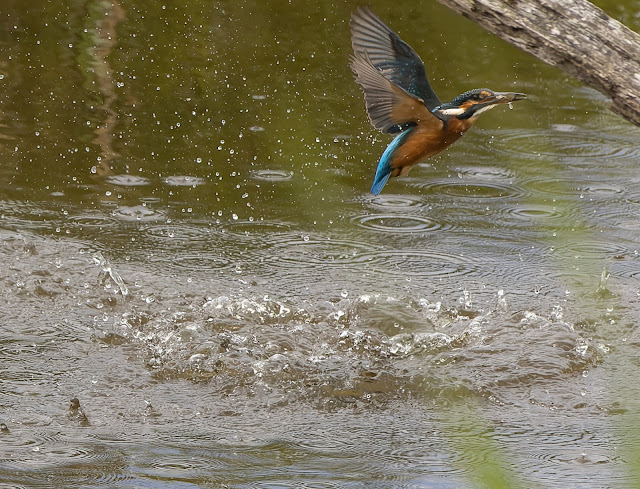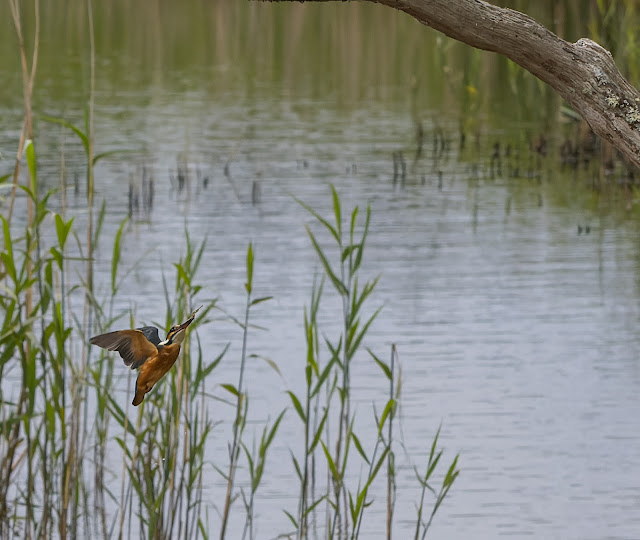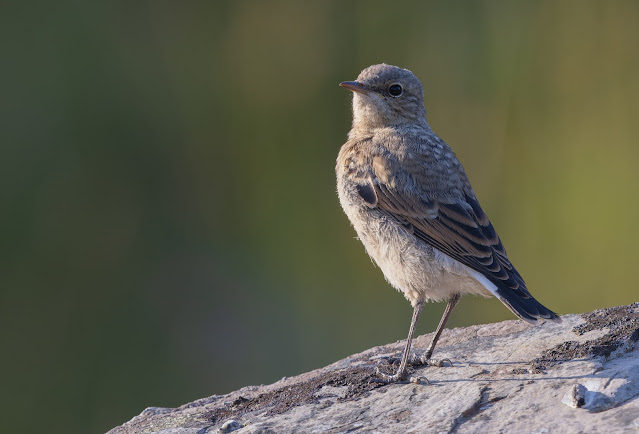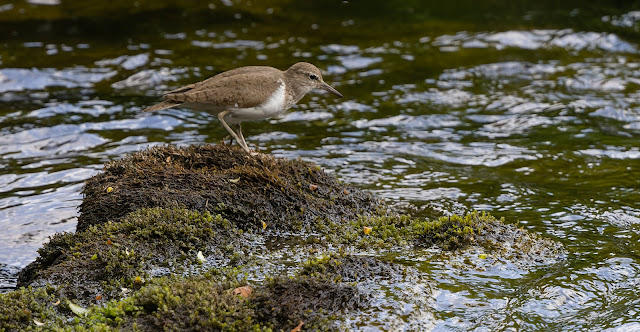Monday, July 25, 2022
Diving Common Kingfisher : Teifi Marshes, Cardigan
Rose-coloured Starling, Llangwyryfon, Ceredigion
A Rosy Starling had been been visiting the garden of birders Sheila and John Geddings in the small hamlet of Llangwyryfon, north-east of Aberaeron for around 10 days and the 15th July was my first chance of visiting to view and attempt to photograph the bird whilst we were visiting our caravan.
There has been a recent influx into the UK of the species with birds seen in Carmarthen and locally in Bridgend.
I had previously met Sheila at Teifi Marshes but had not connected the name and face until I visited and we met again.
I Facebook messaged Sheila on the afternoon of 14th July and she advised that she didn't think that the bird would show during a late pm/evening visit as it had tended to show more frequently during the mornings.
I therefore left a visit until the following morning and hoped that the bird would still be there, another message from Sheila confirmed that the bird was still present and showing really well.
I set off not too early and arrived mid-morning following an hour long drive thanks to Sheila's excellent information and my sat-nav.
The bird showed within a few minutes of me setting up on the property's patio adjacent the rear lawn and proceeded to come to food that John had been putting down regularly for the couple of hours that I spent there.
The bird would feed with the small flock of House Sparrows and then periodically fly up into the conifer boundary hedge and then come back down and feed again.
Although a little distant at about 35m I managed some images that I was quite pleased with and the distance gave me the opportunity to try out my recently purchased Canon EF 2x Mklll extender which performed admirably.
Sheila and John were lovely hosts and really nice to chat with, I even had a cup of tea which was very welcome.
Sheila delighted in showing me her new Sony RX-10 lV bridge camera with which I'm sure she will get some stunning photos.
This was my 7th Rose-coloured Starling over the years in the UK and hopefully not my last, the adult birds are really stunning to look at.
I was indeed very lucky to have visited on the 15th July as the bird was not reported thereafter and appears to have moved on, my big lens probably scared it off !!
My first ever visit to RSPB Gwenffrwd/Dinas Reserve
In almost 25 years of serious birdwatching I had remarkably never made a visit to the beautiful RSPB reserve of Gwenffrwd/Dinas north of Llandovery as I've always thought of it as 'supermarket' birding always preferring the challenge of finding the species that Dinas is famous for locally.
I'd seen and photographed Wood Warbler and seen only Common Redstart locally this spring but had 'dipped' locally on Spotted and Pied Flycatchers.
On 23rd June close friend and fellow 'birder/togger' Dave Gilbert asked me if I fancied a trip to Pal-Y-Cwrt north of Ammanford to see and attempt to photograph Common Cuckoo as the previous day he had seen five Cuckoos at the site.
An early start saw Dave picking me up at 6.00am and we were soon heading west down the M4 arriving at our location at about 7.00am.
Juvenile Northern Wheatears were abundant as were several other species but a Cuckoo was nowhere to be found, I guess the fine warm weather had enticed them to move on and start their journey back to Africa.
Where to go next we thought, we could retrace our steps and call at WWT Penclacwydd, Llanelli but then Dave suggested Dinas and off we went.
We arrived mid-morning and the car park was quiet with only a few vehicles, we set off along the boardwalk and soon came across a pair of Common Redstarts attending young at a nest in a natural tree hole. A female Pied Flycatcher was seen at a distance but not photographed and we them spent some time along the banks of the beautiful river that skirts the reserve.
This held Grey and Pied Wagtails but best of all were a pair of Common Sandpipers one of which gave themselves up for some distant shots, it was joy to watch this species in their natural breeding habitat.
Late June is not the greatest time to visit the reserve as most species have already bred and young have left their nests.
We pushed on along the path to the left hand side of the reserve and came across a splendid Spotted Flycatcher who posed nicely on the only branch projecting from the bracken in the vicinity, what luck.
We also bumped into Paul Seligman from Cardiff and his partner Janet with another female birder that I was not familiar with, we duly chatted and shared information before parting company in different directions.
On our way back to the car park we came across the same pair of Common Redstarts still feeding their young and I spied a young looking Tree Pipit which posed nicely for some photos.
We were just about to leave after a cuppa and a sarnie when Paul Seligman pulled into the car park and gave us directions to a Pied Flycatchers' nest in a tree hole near the dam end of Llyn Brianne which was only 10-15mins drive away.
We followed Paul's instructions and after a little searching found the nest and managed some photos before giving in to the midges that were attacking us both.
Photography was not easy as the dense canopy blocked out so much light and the birds were more difficult to find than they would have been say 4-5 weeks earlier in the season.
Most shots were taken at ridiculously high ISOs and I'm amazed how well the Canon R5 copes with low light and performs at high ISO, the Pied Flycatchers at the end of the day were shot at 12,800 -20,000 ISO, my old Canon 7D MkII would never have coped !!
What a fabulous day out, this may have been my first visit but it won't be my last, my appetite for the reserve has been truly whetted for an earlier visit in spring 2023.






















































